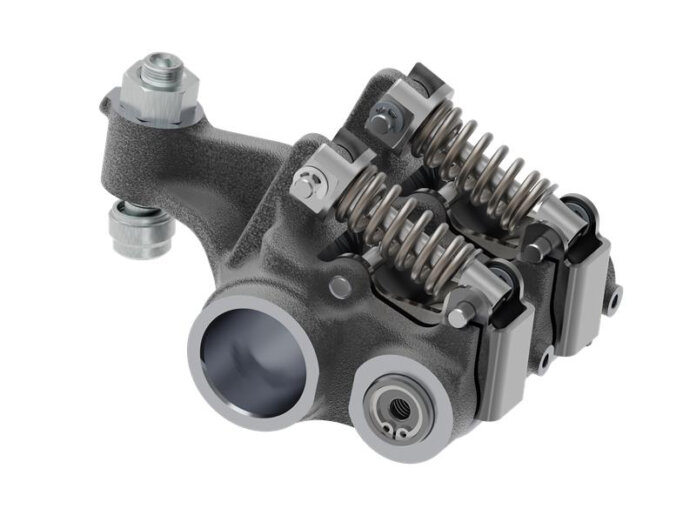Eaton says tests has proven that its cylinder deactivation (CDA) and late intake valve closing (LIVC) technologies simultaneously reduce nitrogen oxides (NOx) and carbon dioxide (CO2), helping to meet future global emissions requirements for diesel-engine powered commercial vehicles.
The testing – which was conducted by FEV – measured fuel consumption and exhaust temperature, from which engine-out NOx and CO2 were determined. Results indicated the CDA created up to a 38% reduction of NOx compared with 13% for LIVC, thanks to exhaust-gas temperature increases, which enable optimal emissions aftertreatment performance. The results were delivered while simultaneously reducing CO2 emissions.
During the evaluation, the standard valvetrain on an 11-liter diesel engine was replaced with Eaton’s variable valve actuation system able to deliver either CDA or LIVC functions. The engine was put on a dynamometer and tested in standard engine and in varying CDA and LIVC engine modes to determine optimal thermal management effects and fuel savings.
“Emissions regulations are driving the adoption of variable valve actuation solutions by our global commercial vehicle customers,” says Eaton’s Fabiano Contarin. “Our portfolio of technologies is helping manufacturers meet the upcoming regulations in a number of ways based on customer preference.”
Eaton’s CDA also resulted in a 3% decrease in fuel consumption in a low-load cycle, while LIVC lowered fuel consumption by 0.5%. Additionally, CDA in three-cylinder mode raised exhaust temperatures up to 175 degrees Celsius, which helped increase the efficiency of a selective catalytic reduction (SCR) system.
The study results confirm earlier findings of tests conducted in the U.S. by Eaton and the Southwest Research Institute, one of the oldest and largest independent, nonprofit applied research and development organizations. The findings of the U.S.-based tests found using CDA and a close-coupled SCR catalyst reduced CO2 emissions by 4% in a low load cycle with NOx emission of 0.02 g/hp-hr.
“If a low-load cycle is a customer’s focus, then CDA is the ideal technology,” Contarin says. “LIVC, instead, provides lower benefits but in a wider range of the engine map, especially when combined with a higher compression ratio.”






